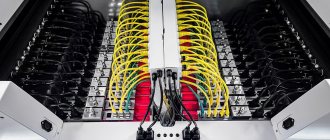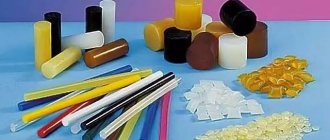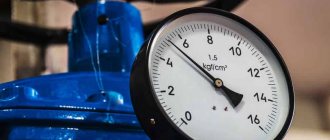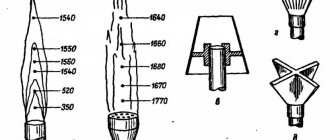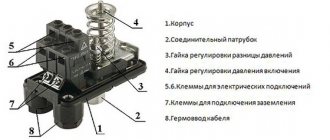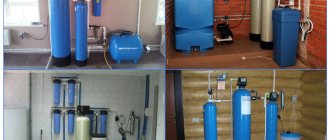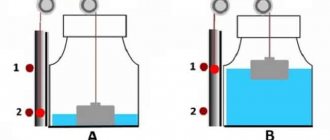Method No. 1. Using ice or a “cold accumulator”
The simplest and most effective way is to add ice cubes from the freezer to the aquarium. The decrease in temperature occurs gradually as it melts, without sudden changes.
However, it has its drawbacks. Firstly, it gives only a short-term effect, and secondly, the ice may contain contaminants and/or hazardous substances that, when melted, will enter the aquarium. In addition, if you get carried away with this process, there is a high risk of affecting the values of the pH and dGH parameters. However, if you place the ice in a clean food-grade plastic bag, then some of the problems are solved.
Cold accumulator
Using cold accumulators from a thermal bag to cool an aquarium.
Safer and more practical are the so-called “cold accumulators” used in portable cooler bags. Floating on the surface, they do not look very aesthetically pleasing, but there is no danger of foreign substances getting into the aquarium. When the batteries give up all the cold, they can be frozen again and reused.
It is advisable to use ice and cold accumulators in small tanks up to 100 liters, since they will not be able to significantly affect a large volume of water.
When to cool the water in the aquarium
With the onset of warm days, it is important to carefully monitor the fish. If they become lethargic, prefer to stay in the upper layers of the aquarium and often swallow air, then this is a signal that they are hot in the aquarium.
An experienced owner will immediately notice that pathogenic bacteria have begun to multiply more actively, and the water has become cloudy.
As soon as signs of excessive heating of the water appear, you need to start cooling it gradually. The worst option is to start draining the warm water and add cold water instead. This will create an imbalance in the ecosystem, and pets may get sick.
Method No. 2. Replacing part of the water with cool water
As with the use of ice, the effect is achieved quickly (in some cases faster), but does not last long. The main advantage is that even large aquariums can be cooled in this way. However, this method is not very convenient and potentially carries significant risks.
The added water must have a similar hydrochemical composition and not be too cold, otherwise there is a high probability of developing the so-called “temperature shock”. It is worth remembering that for many tropical fish, sudden temperature changes of more than 5°C are dangerous to health, and some species are sensitive to changes of even 2°C.
Methods No. 1 and No. 2 are not convenient in the long term, when you need to cool the aquarium for a long time over several days or even weeks until the heat subsides. It is necessary to replace water, add ice and cold accumulators regularly, several times a day, which is quite troublesome and time-consuming.
Control stations
If you want to monitor not only the temperature, but also absolutely all parameters of the liquid in the aquarium, then you need a monitoring station. It can detect heat and cool water to the desired temperature.
However, this method is very expensive, and such stations will most likely have to be ordered from abroad. Not all fish need precise control of water parameters. Therefore, such devices are purchased mainly by professionals who have rather capricious individuals who need special care.
Method No. 4. Aquarium coolers, fans
This method is based on the so-called evaporative cooling. If you continuously blow on the surface of the water, its temperature will become lower than the temperature of the surrounding air.
Aquarium cooler
The principle of operation of the cooler in the process of reducing the water temperature in the aquarium
To cool the aquarium, you can use special miniature coolers, usually attached to the edge on the side glass. Depending on the volume, surface area and size of the device, you can reduce the water temperature to 4–5°C. In most cases this is quite enough.
In the absence of a special cooler, you can place a regular room fan next to the aquarium.
The best effect is achieved in open tanks without a lid with active aeration and surface movement of water.
The disadvantages include active evaporation, which, however, can be turned into an advantage by adding cool water.
What is overheating and why is it dangerous?
Aquarium fish are cold-blooded creatures that are unable to independently monitor their body temperature. Many phenotypes can only exist at a certain number of degrees of heat, and sometimes even minor deviations can lead to the death of pets.
In hot weather, the risk of fish overheating is especially possible, which experienced aquarists determine by the behavior of their pets:
- the inhabitants of the reservoir become lethargic, move little or lie on the bottom;
- the fish move to the upper layers of the tank;
- pets constantly swim to the surface, swallowing air.
If such behavior is observed in fish in the summer, then most likely the temperature of the aquarium water does not meet the requirements of the phenotypes. In this case, you must immediately take auxiliary means, and then start lowering the degrees. First aid for overheating consists of the following:
- The lights in the tank are turned off, as some lighting fixtures heat up the water too much.
- Remove the lid from the aquarium (if there is one). In order not to worry about moving and active pets that might jump out, you can cover the tank with light fabric or mesh.
- The compressor power is increased to maximum to create air circulation.
It should be noted that some novice aquarists, when faced with the question of how to cool an aquarium for the first time, throw ice cubes into the liquid or replace part of the liquid with cold water in an attempt to change the temperature. Under no circumstances should this be done! Such a sharp change in degrees can lead to the death of pets.
Why is it necessary to cool a pond:
- warm water contains less oxygen than cold water, so the phenotypes suffocate;
- fish waste increases, and high temperatures promote the development of harmful bacteria and algae;
- high temperatures contribute to the deterioration of the pets’ condition, as a result of which the fish die.
How to cool water in an aquarium
You can lower the temperature in an artificial reservoir using many methods; your own preferences and capabilities will help you choose which one. Some owners choose to cool their aquarium themselves by creating homemade coolers, while others purchase an aquarium cooler.
In any case, regardless of the chosen method, every aquarist should have a water monitoring station. This is a set of instruments with which tank owners monitor water parameters:
- acidity;
- rigidity;
- amount of precipitation;
- temperature.
Thus, aquarists can always find out the exact number of degrees, and start taking action based on the results. Water cooling methods:
- lowering the indoor air temperature;
- aquarium cooler;
- cooler or ventilation;
- homemade products for cooling.
Decrease of indoor air
This is the simplest and easiest way to cool the water in an aquarium with your own hands. It's no secret that the temperature of the liquid directly depends on the air temperature in the room, so you shouldn't be surprised when aquarium water is heated in the summer heat.
You can reduce the amount of heat by closing the curtains on the windows tightly so that the sun's rays do not penetrate into the room. Air conditioners and home fans are also used to ventilate the room.
Aquarium cooler
Installing a special refrigeration system will help you not to worry about the temperature in the aquarium at all. These are professional coolers for artificial reservoirs that smoothly and safely reduce the temperature as much as necessary.
The only drawback of the method is the price - the cooling device is expensive, and not all aquarists can afford fabulous expenses for equipping the tank.
Cooler
You can build a cooling device for an aquarium with your own hands using an old computer cooler. To do this you will need the following elements:
- old cooler;
- sealant;
- chalk;
- knife;
- Charger.
The aquarium fan is assembled as follows:
- A cooler is applied to the cover of the artificial reservoir in the place where the fan is planned to be placed. The outline of the cooler is outlined with chalk.
- A hole is cut along the chalk line, repeating the dimensions of the future fan. A cooler is placed in the hole.
- The free space between the edge of the cover and the fan is filled with sealant and left for a while for the sealant to dry.
- The plug is separated from the charger, the wires are disconnected and cleaned.
- The wires are connected to the device so that the shades match. This is important because otherwise the cooler will spin the other way.
- The do-it-yourself cooling device for an aquarium is ready.
For best results, place not one, but two coolers in the tank lid. The disadvantage of this method is that not everyone is well versed in wires and computer components.
Method number 5. Reducing the lighting level
Relevant for closed aquariums that use lighting systems based on fluorescent and metal halide lamps built into the lid. These types of lamps, if they are located close to the surface, generate a lot of heat, thereby heating the water. This can be useful in the winter months, but in the summer it can cause overheating.
Reducing the number of lamps or replacing them with less powerful ones will reduce the heat generated. However, such savings can have a detrimental effect on the plants in the aquarium.
How to Cool Your Aquarium
During the summer, it is important to keep a close eye on your aquarium thermometer and begin taking precautions before the temperature rises too much. The best ways to cool your aquarium(s) without destabilizing them can be found below. Be sure to also run the air pump, as hot water contains less oxygen.
- Keep the room cool. It's a good idea to keep the rest of the room as cool as possible. Closing the curtains during the day and turning on the air conditioning can really help with this.
- Switch the lights off.
If your plants allow it, leaving the aquarium lights on for a few hours or turning them off completely on the hottest days can definitely help. They produce a lot of heat!
- Open the lid of the aquarium. If you don't have fish in your tank that like to jump, you can let the temperature drop by opening the lid or even removing it completely.
- Use a filter. If you have an external filter, cooling your aquarium will be a little easier. Running the tubes through cold water or even an ice chest can really help, but you have to keep a close eye on everything. The temperature should not drop too quickly, as this can damage the fish and your precious cycle. This method is good for small aquariums!
Homemade products for an aquarium
To cool an artificial pond, many aquarists use ice, creating and inventing ways to lower the temperature in the tank. Today, two methods are considered safe and effective:
- Bottles with ice - aquarium owners freeze liquid in plastic bottles and place the containers in ponds. The method allows you to smoothly lower the temperature by a couple of degrees.
- Internal filter - the filter media is removed from the device and ice cubes are placed in its place. The device is installed back. Thanks to this method, the liquid cools instantly, so you should monitor the degrees.
Overheating in an aquarium is a dangerous moment for the life of fish and other inhabitants of the tank, so it is necessary to constantly monitor the temperature level. To cool water, aquarists use different methods: from homemade devices to purchasing expensive coolers, the main thing is that the method is safe and effective.
Other interesting articles
- How to increase the water temperature in an aquarium without a heater Fish are cold-blooded creatures, their body temperature is determined by the temperature of the surrounding space. From the comfort of the water...
- How to lower the pH in an aquarium with plants* pH in an aquarium The pH value or pH in an aquarium characterizes the acidic properties of the biosystem. Compliance with it...
- How to lower the pH in an aquarium at home An aquarium can be called a home decoration. Harmoniously selected, it pleases the eyes of hosts and guests. And this…
Technology on the verge of fantasy
In fact, today there are already systems for monitoring the life support of an aquarium. They not only heat water, control its hardness and softness, but can also cool it if necessary. This happens with the help of special tanks that are in contact with copper tubes filled with freon. The water passing through them becomes cold. But such systems are too expensive to be popular.
Aquarists usually find their situations much simpler. They remove the lamps from the aquarium lid and install fans in their place. You can simply take a home fan and point it at the surface of the water.

